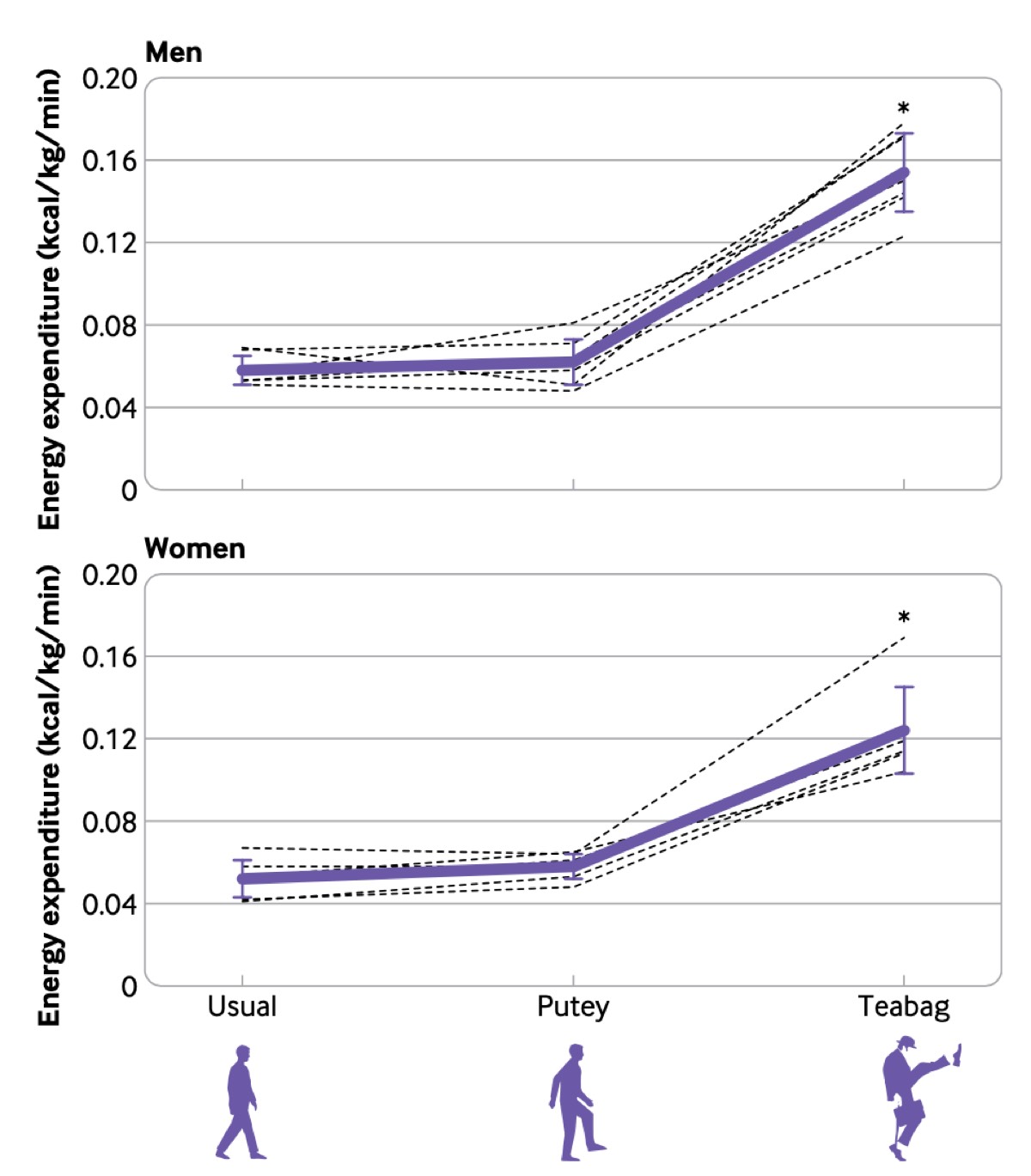Walking like John Cleese's character, Mr. Teabag, in Monty Python's famous "Ministry of Silly Walks" skit requires considerably more energy expenditure than a normal walking gait because the movement is so inefficient, according to a new paper published in the annual Christmas issue of the British Medical Journal. In fact, just 11 minutes a day of walking like Mr. Teabag was equivalent to 75 minutes of vigorously intense physical activity per week, presenting a novel means of boosting cardiovascular fitness.
"Half a century ago, the [Ministry of Silly Walks] skit might have unwittingly touched on a powerful way to enhance cardiovascular fitness in adults," the authors wrote. "Had an initiative to promote inefficient movement been adopted in the early 1970s, we might now be living among a healthier society."
The BMJ's Christmas issue is typically more lighthearted, though the journal maintains that the papers published therein still "adhere to the same high standards of novelty, methodological rigor, reporting transparency, and readability as apply in the regular issue." Past years have included papers on such topics as why 27 is not a dangerous age for musicians, the side effects of sword swallowing, and measuring the toxicity of the concoction brewed in Roald Dahl's 1981 book George's Marvelous Medicine. (It's very toxic indeed.) The most widely read was 1999’s infamous “Magnetic resonance imaging of male and female genitals during coitus and female sexual arousal.” (We wrote about the paper in 2019 to mark the 20th anniversary of its publication.)
As we've reported previously, the "Ministry of Silly Walks" sketch first aired on September 15, 1970, on BBC One. It opens with Mr. Teabag buying a newspaper on his way to work—which takes him a bit longer than usual since his walk "has become rather sillier recently." Waiting for him in his office is a gentleman named Mr. Putey (Michael Palin), who is seeking a grant from the Ministry to develop his own silly walk. Putey demonstrates his silly walk-in-progress, but Teabag isn't immediately impressed. "It's not particularly silly, is it?" he says. "I mean, the right leg isn't silly at all, and the left leg merely does a forward aerial half-turn every alternate step." Putey insists that a government grant would allow him to make the walk very silly indeed. Teabag eventually offers him a research fellowship on the Anglo-French silly walk. The sketch cuts to a pair of Frenchmen demonstrating this "La Marche Futile."
In 2020, two scientists at Dartmouth College performed a gait analysis of the various silly walks on display, publishing their findings in the journal Gait and Posture. They studied both Putey's and Teabag's gait cycles in the video of the original 1970 televised sketch, as well as Teabag's gaits from a 1980 live stage performance in Los Angeles. They found that Teabag's silly walk is much more variable than a normal human walk—6.7 times as much—while Putey's walk-in-progress is only 3.3 times more variable.
But according to the authors of this latest paper, the 2020 study didn't measure the caloric expenditure of those silly gaits. So Glenn Gaesser of Arizona State University and his co-authors decided "to fill this vital research gap." The authors note that humans have evolved to "move in increasingly efficient ways," but when it comes to cardiovascular fitness, "inefficiency of movement might be a desired trait." They thought it might be possible to decrease the energy efficiency by adopting a more inefficient gait, thereby boosting cardiovascular fitness without having to exercise for a longer period of time. They dubbed their approach PEMPA: practice of effort maximization in physical activity.
For their study, Gaesser et al. recruited 13 healthy adults (six women and seven men) between the ages of 22 and 71 years old. The subjects completed three walking trials on an indoor track: one walking with their usual gait and chosen pace, one walking (to the best of their ability) in the manner of Teabag, and a third attempting to walk like Putey. All the subjects wore portable metabolic measurement systems to measure oxygen uptake (ml/kg/min), energy expenditure (kcal/kg/min), and exercise intensity (METs). And it sounds like most of the subjects enjoyed the experience.

"We did not measure minutes spent laughing or number of smiles as secondary outcomes while walking inefficiently," the authors wrote. "Smiling during the inefficient walking trials could not be observed due to participants’ mouths being obscured by the facemask worn during data collection. However, all participants were noticeably smiling upon removal of the facemask. Moreover, bursts of laughter from the participants were frequently noted by the supervising investigator, almost always when participants were engaging in the Teabag walk."
The results: For both men and women, walking like Teabag resulted in significantly greater energy expenditure—about 2.5 times more than regular walking or walking like Putey. In fact, the Teabag walk showed an energy intensity of eight METs, which amounts to vigorously intense exercise. Plus, it's fun, though one must be willing to look a bit silly.
"At present, we cannot advocate generalizing the findings of this research and general suggestion to decrease efficiency in movement to other forms of exercise such as mountaineering, water sports (except aquatic aerobics), or urban cycling," the authors concluded. "Inefficient dancing has been around for generations but, too often, that lone innovator at your local nightclub or on your cruise ship has been the subject of derision rather than justifiable admiration (with the notable exception of break dancing)."
Listing image by BBC



3175x175(CURRENT).thumb.jpg.b05acc060982b36f5891ba728e6d953c.jpg)

Recommended Comments
There are no comments to display.
Join the conversation
You can post now and register later. If you have an account, sign in now to post with your account.
Note: Your post will require moderator approval before it will be visible.